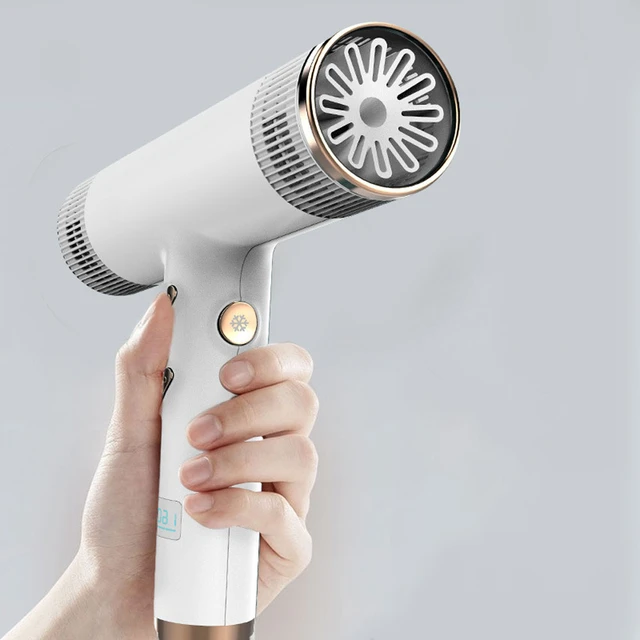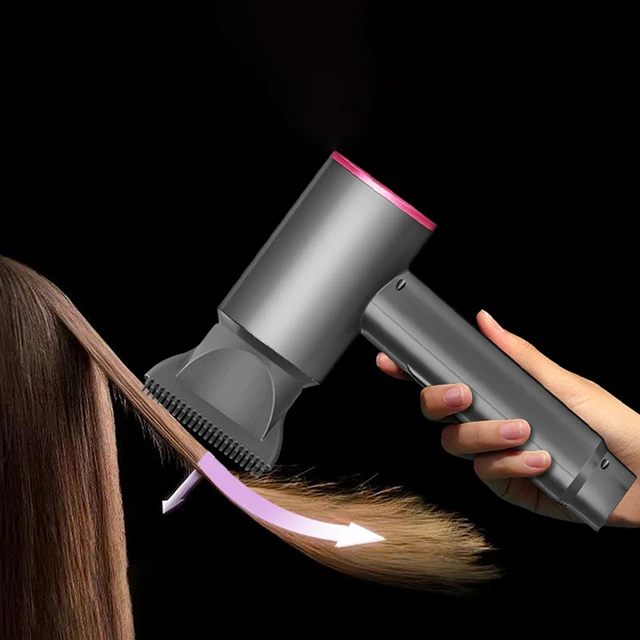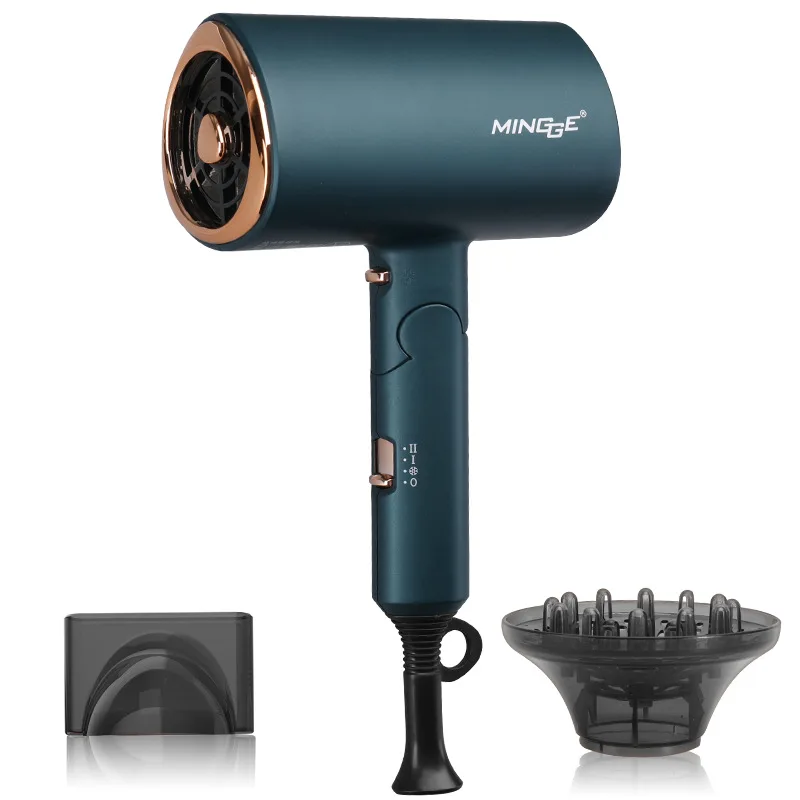When considering hair care tools, the question of hair dryer temperature often comes up. How does the temperature setting on a hair dryer impact your hair health and styling results? From achieving the perfect style to maintaining the integrity of your hair, the temperature setting plays a crucial role. Curious about the optimal temperature for different hair types and how to avoid potential damage? Read on to uncover detailed insights into the significance of hair dryer temperature and tips for using it to your advantage.
Understanding Heat Settings
Hair dryers typically come with multiple heat settings: low, medium, and high. Each setting serves a different purpose and is suitable for various hair types and styling needs. The low setting is ideal for fine, thin, or damaged hair, reducing the risk of heat damage. Medium settings are generally suitable for normal hair, offering balanced drying without excessive heat.
The high setting is powerful but should be used cautiously. It’s best suited for thick or coarse hair that requires more heat for effective drying. Understanding the function of each setting allows you to choose the appropriate level of heat for your hair type, optimizing results while minimizing potential harm.
The Science Behind Heat and Hair
Heat affects hair by breaking down the hydrogen bonds within the hair shaft, allowing it to be reshaped and styled. While this process is essential for styling, excessive heat can compromise the hair’s structure. Repeated exposure to high temperatures can lead to cuticle damage, making the hair porous, dry, and prone to breakage.
In contrast, moderate and controlled heat can enhance the hair’s appearance and manageability. This balance underscores the importance of selecting the right temperature setting on your hair dryer. By understanding the science behind heat and hair, you can make informed decisions that promote hair health and achieve desired styles.
Identifying Your Hair Type
Knowing your hair type is essential for selecting the proper temperature setting. Fine or thin hair is more susceptible to damage from high heat. Using lower temperature settings preserves the hair’s integrity while providing sufficient drying power. For normal or medium hair, a medium heat setting typically offers the best balance between efficient drying and minimal damage.
Thick, coarse, or curly hair often requires higher temperatures to dry effectively and achieve smooth results. However, even with thick hair, it’s crucial to use heat protectants and avoid prolonged exposure to high temperatures. Tailoring the temperature to your hair type ensures optimal drying results and long-term hair health.
The Role of Heat Protectants
Heat protectants are essential for safeguarding your hair against potential damage from high temperatures. These products create a protective barrier that reduces moisture loss and heat-induced damage. Applying a heat protectant before using a hair dryer is crucial, regardless of the temperature setting.
There are various formulations, including sprays, creams, and serums, each suited for different hair types and needs. Consistently using a heat protectant ensures your hair remains moisturized and resilient, even with regular heat styling. Incorporating this step into your routine is a simple yet effective way to maintain healthy hair while using a hair dryer.
Employing the Cool Shot Feature
Many hair dryers come equipped with a cool shot feature, which emits a burst of cool air. This function is not merely a comfort feature; it serves a practical purpose in the styling process. After using heat to shape and style the hair, the cool shot helps set the style by closing the hair cuticle and sealing in shine.
Using the cool shot feature can also reduce heat exposure, making it a valuable tool for protecting hair health. Incorporating cool air into your drying routine not only enhances the final look but also contributes to better hair health by balancing heat usage with cooling intervals.
Balancing Heat and Speed Settings
Apart from temperature, hair dryers also have speed settings: low, medium, and high. Balancing these settings with the appropriate heat level can enhance drying efficiency and protect hair health. For instance, using a high-speed setting with low or medium heat can provide quick drying without intense heat exposure.
Experimenting with different combinations allows you to find the most effective and safest approach for your hair type. Balancing heat and speed settings ensures efficient drying and styling, minimizing the risk of heat damage and promoting healthier hair.
Professional vs. Consumer Hair Dryers
Professional hair dryers often offer more advanced temperature control and consistent heat distribution compared to consumer models. They are designed for frequent, high-performance use, making them ideal for achieving salon-quality results at home. Investing in a professional-grade hair dryer can provide better temperature regulation, reducing the risk of uneven heat exposure and damage.
However, consumer hair dryers can also offer effective temperature control, particularly those with multiple heat settings and advanced features like ionic and tourmaline technology. Choosing the right type of hair dryer depends on your specific needs, hair type, and styling preferences. Both professional and consumer models can deliver safe and effective results with the proper use.
Using Attachments for Better Temperature Control
Attachments like diffusers and concentrators can help manage the temperature and airflow of your hair dryer, enhancing styling precision and protecting hair health. A diffuser spreads the heat more evenly and reduces direct heat exposure, making it ideal for curly or wavy hair. It helps maintain natural curls and prevent frizz by diffusing concentrated airflow.
A concentrator nozzle directs the heat and airflow to specific sections, allowing for more controlled styling. Using these attachments properly can help manage the temperature’s impact, resulting in better styling outcomes and healthier hair. Employing the right attachment for your needs ensures optimal temperature control and styling efficiency.
Avoiding Heat Damage
To avoid heat damage, it’s essential to practice mindful drying techniques. Keeping the hair dryer at a safe distance from your hair—typically six inches—prevents direct, intense heat exposure. Constantly moving the dryer around your hair rather than focusing on one spot avoids localized overheating.
Using lower heat settings whenever possible and incorporating breaks during drying can further reduce damage. Regular trims and deep conditioning treatments also help maintain hair health by removing damaged ends and replenishing moisture lost during heat styling. These practices collectively contribute to healthier hair and effective heat styling.
The Impact of Environmental Factors
Environmental factors like humidity and temperature can influence how your hair responds to heat settings. High humidity causes hair to absorb moisture from the air, leading to frizz and making it more susceptible to heat damage. Adjusting your hair dryer temperature to lower settings in humid conditions can help mitigate these effects.
Dry or cold climates may require different approaches, such as using heat settings to combat static and enhance manageability. Understanding and adapting to environmental conditions ensures you select appropriate heat levels and maintain hair health despite external factors.
 Innovations in Heat Technology
Innovations in Heat Technology
Modern hair dryers often incorporate innovative heat technologies designed to enhance performance while protecting hair health. Infrared heat, for example, penetrates hair more gently and evenly, reducing the risk of surface damage. Tourmaline technology generates negative ions that break down water molecules faster, allowing for lower temperature settings and quicker drying.
These technological advancements enable more efficient and safer hair drying, providing the benefits of high performance without the drawbacks of excessive heat. Staying informed about these innovations helps you choose hair dryers that align with your hair care goals and preferences.
Listening to Your Hair
Hair health is dynamic and can change due to various factors such as age, hormonal changes, and treatments. Paying attention to how your hair responds to different temperature settings helps you adjust your routine accordingly. If you notice increased dryness, breakage, or frizz, it may be time to lower the heat setting or invest in better heat protectants.
Regularly assessing your hair’s condition ensures you adapt your hair drying techniques to meet its changing needs, promoting long-term health and optimal styling results. Listening to your hair and making necessary adjustments ensures it remains resilient and beautiful.
User Reviews and Expert Recommendations
User reviews and expert recommendations provide valuable insights into the practical application of hair dryer temperature settings. Reading reviews from individuals with similar hair types can offer realistic expectations about how a hair dryer performs at different temperatures. Expert recommendations from hairstylists can guide you toward products and techniques tailored to your specific needs.
Combining these sources of information ensures a well-rounded approach, helping you make informed decisions about temperature settings and hair dryer features. Leveraging shared experiences and professional advice enhances your overall hair care routine.
Conclusion:
Mastering Hair Dryer Temperature for Healthy Hair
In conclusion, understanding hair dryer temperature and its impact on hair health is crucial for achieving the best styling results while maintaining the integrity of your hair. From identifying appropriate heat settings for different hair types to employing heat protectants and utilizing advanced technologies, mastering temperature control ensures effective and safe drying.
Balancing heat with speed settings, using attachments, and adapting to environmental factors all contribute to optimal hair care practices. By staying informed about innovations and listening to your hair’s needs, you can navigate the complexities of hair dryer temperature and achieve beautiful, healthy hair with confidence. Implementing these insights and techniques into your routine promotes long-term hair health and enhances the styling experience.

